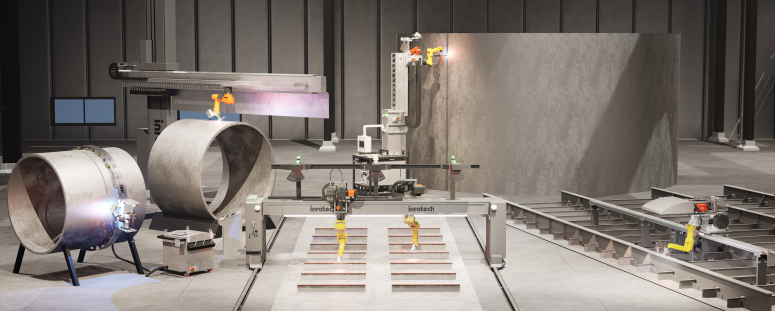Heavy Steel Plate-Interface engaged in a thought-provoking discussion with Philip Halskov of Introtech about the evolving landscape of the heavy steel plate industry, particularly focusing on the roles of welding and robotization. Amidst concerns about a shrinking skilled labor force, automation emerges as a beacon, offering innovative solutions and a renewed appeal to younger professionals.
Addressing the Skilled Labor Gap
The decline in interest towards manual labor-centric careers is palpable within the heavy steel plate industry. Halskov acknowledged, "It's not very appealing to work with heavy steel plates." Consequently, the younger generation often gravitates towards academic pursuits, leaving traditional sectors like welding searching for talent.
Robotized Welding and its Attraction to the Youth
 Introtech's response to this challenge is innovative: welding robots. While these robots aren't designed to entirely replace human intervention, Halskov is optimistic they can undertake around 80% of tasks in domains like shipbuilding, renewable energy, and other heavy industries.
Introtech's response to this challenge is innovative: welding robots. While these robots aren't designed to entirely replace human intervention, Halskov is optimistic they can undertake around 80% of tasks in domains like shipbuilding, renewable energy, and other heavy industries.More crucially, this shift towards robotized welding isn't just functional—it's transformative. "I think it's more appealing for a young individual to control a robot than to be inside a ship doing manual welding," Halskov shared, underlining the industry's need to align with the younger generation's goals.
Opportunities through Automation
Every challenge carries the seed of opportunity, a sentiment echoed by Halskov. The heavy steel plate industry, faced with labor concerns and external pressures, finds hope in automation. Halskov drew comparisons with the automotive sector from decades past, noting how necessity spurred innovation and automation then a lesson the heavy steel plate industry can incorporate now.
With successful models like Toyota's "just in time" system providing insight, it's essential for the heavy steel plate industry to leverage available automation technologies.
The Road Ahead: Technologies and Skill Adaptation
Although the framework for robotized welding and automation is clear and present, as Halskov pointed out, "The technology is available," the path to its broader adoption introduces its challenges. The transition requires not only technology but also a workforce skilled in its use.
Moreover, it's vital to understand automation's limits. While it holds immense potential, the notion that it can completely replace human input is mistaken. "It's naive to assume [full automation] is achievable," Halskov stressed.
Conclusion
Robotization and welding occupy a unique position in the heavy steel plate industry. As highlighted by Philip Halskov of Introtech, the task now lies in balancing tradition with innovation, ensuring the industry remains enticing for future talent.
Metal-Interface takes great care to protect your privacy: when you submit a request or ask a question, your personal information is passed on to the supplier concerned or, if necessary, to one of its regional managers or distributors, who will be able to provide you with a direct response. Consult our Privacy Policy to find out more about how and why we process your data, and your rights in relation to this information. By continuing to browse our site, you accept our terms and conditions of use.
 Schweissen & Schneiden 2023 Press release
Schweissen & Schneiden 2023 Press releaseWelding and Robotization in the Heavy Steel Plate Industry: Philip Halskov Discusses Solutions to the Labor Gap
Published on 10/11/23
